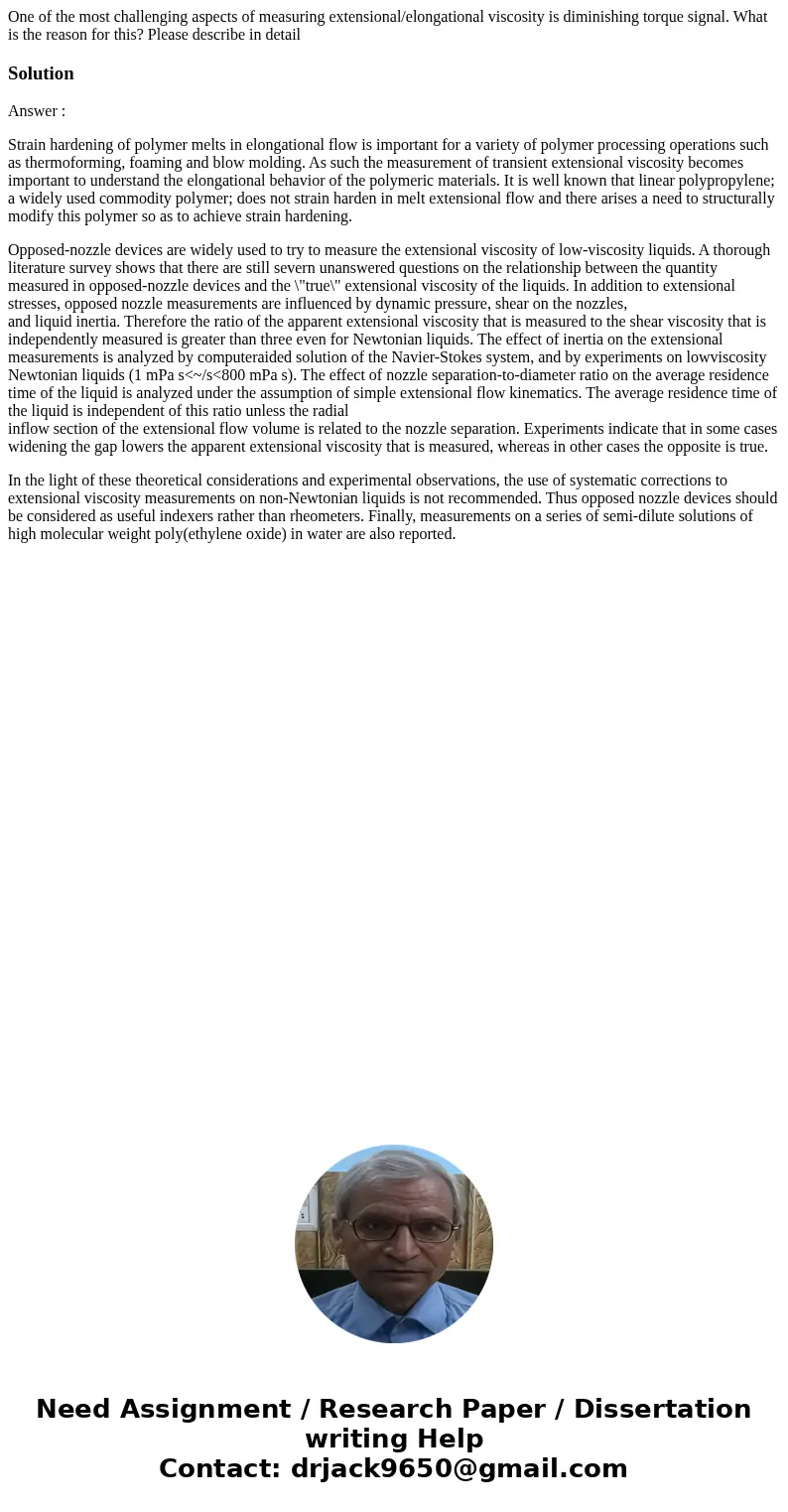One of the most challenging aspects of measuring extensional
One of the most challenging aspects of measuring extensional/elongational viscosity is diminishing torque signal. What is the reason for this? Please describe in detail
Solution
Answer :
Strain hardening of polymer melts in elongational flow is important for a variety of polymer processing operations such as thermoforming, foaming and blow molding. As such the measurement of transient extensional viscosity becomes important to understand the elongational behavior of the polymeric materials. It is well known that linear polypropylene; a widely used commodity polymer; does not strain harden in melt extensional flow and there arises a need to structurally modify this polymer so as to achieve strain hardening.
Opposed-nozzle devices are widely used to try to measure the extensional viscosity of low-viscosity liquids. A thorough literature survey shows that there are still severn unanswered questions on the relationship between the quantity measured in opposed-nozzle devices and the \"true\" extensional viscosity of the liquids. In addition to extensional stresses, opposed nozzle measurements are influenced by dynamic pressure, shear on the nozzles,
and liquid inertia. Therefore the ratio of the apparent extensional viscosity that is measured to the shear viscosity that is independently measured is greater than three even for Newtonian liquids. The effect of inertia on the extensional measurements is analyzed by computeraided solution of the Navier-Stokes system, and by experiments on lowviscosity Newtonian liquids (1 mPa s<~/s<800 mPa s). The effect of nozzle separation-to-diameter ratio on the average residence time of the liquid is analyzed under the assumption of simple extensional flow kinematics. The average residence time of the liquid is independent of this ratio unless the radial
inflow section of the extensional flow volume is related to the nozzle separation. Experiments indicate that in some cases widening the gap lowers the apparent extensional viscosity that is measured, whereas in other cases the opposite is true.
In the light of these theoretical considerations and experimental observations, the use of systematic corrections to extensional viscosity measurements on non-Newtonian liquids is not recommended. Thus opposed nozzle devices should be considered as useful indexers rather than rheometers. Finally, measurements on a series of semi-dilute solutions of high molecular weight poly(ethylene oxide) in water are also reported.

 Homework Sourse
Homework Sourse